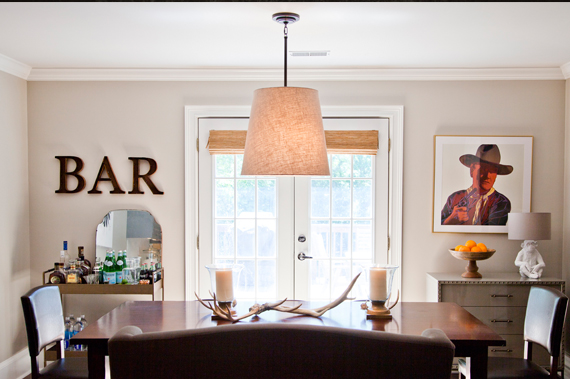


In Touch With Texture
By Johi Kokjohn-Wagner
Photography by Lindsay Cox, Letters & Light
Texture can be integrated into an interior through many different applications, using a variety of inspiration and materials. It’s a balancing act that, if done correctly, will bring juxtaposition and add interest to any space. When applying texture in your design, think about it in both a visual and tactile sense. Some simple and thoughtful ways to incorporate the design element of texture are through layering, contrast, emotion, aesthetics, architecture, fabrics and accessories.
Jade O’Connor, lead designer of Jade O’Connor Designs in Georgia, shares her thoughts on design.
“For me, good design lies in the mix of color, pattern and texture,” Jade said.
This is the fourth installment in Chrome’s exclusive, web-based design series. Read the previous articles: Part 1: Define, Design, Decorate; Part 2: A New Shade; and Part 3: Punch It Up With Pattern.
Layer for Interest
From curtains and bedding to floor coverings and table settings, layering is an excellent way to add depth to your home. Consider the type of materials you choose and the emotion that each one evokes. Carpet adds softness and grounding, while glass allows a light, airy feel. Silk adds sheen and luxury, while nubby wool provides rough warmth. Wood or stone add stability, while fire or water supply energy to a room. Linen is crisp and clean, while velvet evokes opulence and depth. Consider how these emotions and textures work together in your room.
“You can add texture with rugs: woven, pile, and loop. Rug on top of rug. Texture comes from layering,” she said. “I love mixing textures. Contrast is best when plush meets flat and coarse meets smooth.”
Contrast for Dimension
A room filled with the same texture is one-dimensional. Bring in a variety of different textures for both visual and tactile impact. Imagine a rugged stone fireplace adjoined with a glossy hardwood floor, which is topped with a thick wool carpet—each element adds a different texture and provides a contrasting, yet cozy and cohesive, ambiance. Now imagine a room in floor-to-ceiling marble and glass—the hard, shiny surfaces portray a cold, museum-like atmosphere. Pay attention to how certain materials make you feel and create your space with well-directed intention, using juxtaposition to unify your room.
“Unlike pattern, I don’t like to repeat texture,” Jade said. “One chenille sofa is usually enough; the pillows don’t have to be chenille, too. A good way to break up a store-bought room is by adding in layers with different textures.”
Look Beyond Textiles & Upholstery
Texture is not only applied with fabric. Accessories, art and nature are a wonderful way to incorporate texture. Sculptures of metal, vases of glass, ceramic bowls, woven baskets and live plants are all sources of interesting texture. Everything you bring into your room becomes part of the design. Make thoughtful choices, always keeping layering and contrast in mind.
Use the architecture of the room for texture, as well.
“Don’t forget the ceilings,” Jade said. “Wallpaper the ceiling in a grasscloth to add texture to your space.”
Mix, Layer, Edit, Repeat
As with any design, good editing is key. Many people are unable to edit their own space, which is where help from a designer or a discriminating friend is especially useful. Don’t be afraid to ask for opinions! Even designers appreciate outside ideas in their own homes.
“Use textiles to add interest as you would a pattern,” Jade said. “My one rule in a room—the one I never break—is mix textures and weights of all the fabrics. Layer, edit, add in, edit, repeat.”
##
(Up next in the interior design series: Design with the Five Elements: Earth, Wood, Fire, Water, and Metal.)
SHARE THIS